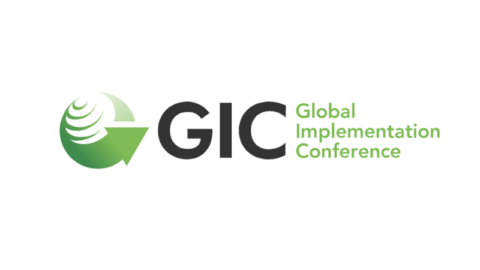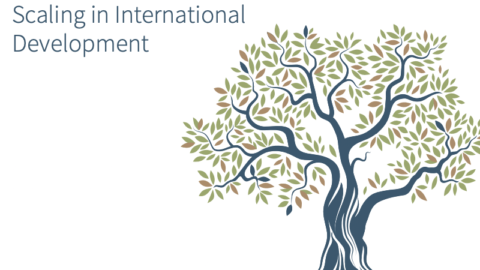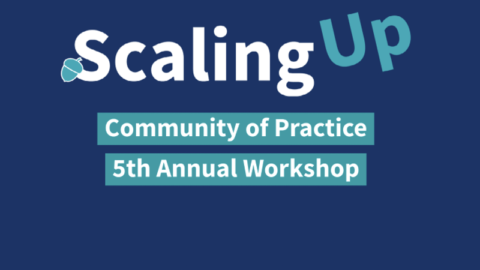Introduction
Over the last 50 years there have been a variety of successful efforts to scale up development interventions to a national, regional and even global level. Among public sector-driven initiatives, China stands out for its systematic scaling approach (eg the Loess Plateau Watershed Rehabilitation Project), as does India with its large-scale rural development and health programmes, and Mexico’s Progresa-Oportunidades conditional cash transfer programme. Among private sector-driven scaling successes, the IT revolution is perhaps most notable, including such innovations as the M-Pesa mobile payments system in East Africa, while among non-governmental organisation-driven initiatives, the Grameen Bank and BRAC in Bangladesh are prime examples. Moreover, there are external donor-driven cases of successful scaling, such as the Green Revolution; the River Blindness Program in West Africa; the Global Fund-led fight against HIV- AIDS, TB and malaria; global vaccination schemes under the auspices of Gavi; and Global Financing Facility-supported health programmes.
Failing to successfully scale up
Despite the above examples, development interventions have typically either not been scaled up or gone wrong when pursued at a large scale. Everyone engaged in the development arena has tales to tell of promising interventions that have not succeeded in making it to the next level or scaling efforts that have gone off the rails. While not every intervention can or should be scaled up and maximal scale may not be optimal, many such opportunities are passed over or fail due to scaling not being pursued systematically and effectively. This is because:
- there has traditionally been considerable emphasis on seeking out innovations and piloting new interventions, with comparatively little interest in pursuing the seemingly more boring (and demanding) process of scaling – the result is too many ‘pilots-to-nowhere’;
- development actors – governments, entrepreneurs, external partners – focus on one-off, short-term projects and programmes rather than on achieving long-term development impact;
- political and bureaucratic transitions in government, business and external funders lead to frequent priority changes and a lack of continuity in engagement, which clashes with the fact that scaling opportunities often take many years to come to fruition;
- for external development partners and funders, growing fragmentation in the aid architecture and a lack of incentives to cooperate and coordinate with others have added to the problem – as a result, while donor-funded projects are overwhelmingly evaluated as successful, the overall evidence that external assistance helps development remains ambiguous;
- while there is substantial focus on the amount of money to be raised and invested, too little thought goes into whether and how investments are achieving sustainable impact at scale; and
- while the Sustainable Development Goals (SDGs) and the Paris Climate Agreement have set ambitious global targets, development and climate projects do not effectively link up with these goals, even when they have been articulated at the national level.
In short, when it comes to development and climate programmes, there remains a serious gap between aspirations and response – a gap that a more systematic focus on scaling development and climate impact could help close.
The good news is that over the past decade more attention has been being paid to the scaling agenda by the international development community. Moreover, the climate and COVID crises – as well as the global impacts of the Ukraine war – have added a sense of urgency to achieving impact at scale, especially when set against the approaching 2030 target date for the SDGs. This shift in focus is reflected in the development of the global Scaling Community of Practice, which was set up in 2015 and now has some 2,000 members from over 400 organisations. However, while the community’s work has provided a variety of useful principles, lessons, approaches and tools to support scaling, it is also clear that in many cases the scaling agenda remains no more than a mantra. This is because, with a few exceptions, it has not been systematically institutionalised in governments and the civil society organisation community, nor been mainstreamed in external partner operational practice.
Focusing systematically on scaling
A systematic focus on scaling would involve programme/ project managers addressing the following six interrelated questions when preparing, implementing, monitoring and adapting development and climate programmes:
- What is the vision of development or climate impact that the project/programme will contribute to, and how much will its contribution be? Responding to this question ensures the focus is squarely on the long-term scaling objective and pathway, with the specific project constituting only part of the journey towards an intervention’s ultimate goal. In this way, too, managers can identify a project’s contribution to the SDGs and the Paris Climate goals, measuring its impact as a proportion of the final goal and spotlighting what remains to be done after project/ programme end.
- Do we have the right intervention to help achieve the vision? The next critical task is choosing the right intervention to scale, bearing in mind whether it actually produces the expected impact and does so better than the available alternatives. Here, evidence of impact, benefits and costs is essential – hence, piloting interventions and evaluating them with randomised controlled trials (RCTs) is generally recommended to avoid scaling something that does not work or is less effective than an alternative.
- Who are the principal actors and stakeholders, and how best can they be engaged? Project and programme managers must ensure they are engaging actors at the right level – national goals, for example, will likely require national-level leaders. Just as importantly, the right stakeholders – public, private and community level, depending on their role in the scaling pathway – should be involved in the design and implementation of a scaling process. Winners and losers need to be identified, and deserving losers compensated. In addition, partnerships and coordination among actors are a prerequisite. Finally, successful scaling generally requires funders (organisations that provide finance) and intermediaries (to facilitate the process across actors).
- What are the systemic opportunities and constraints (‘enabling conditions’) for scaling, and how do we address them? All development and climate interventions take place in an ecosystem of enabling conditions (ie policies and regulations, institutions, environmental and cultural opportunities and constraints); and all have to reckon with potential fiscal or credit constraints, limited market or community demand, and political opposition. These enabling conditions tend to get more important as an initiative grows in scale. Therefore, while in the initial stages managers may be able to ignore or work around these systemic factors, efforts to change the enabling conditions (ie system change) will take on increased importance as the scaling process proceeds.
- How will the scaling process be implemented? A key lesson from scaling experience is that scaling does not happen by itself – rather, systematic attention to programme design and implementation is Not only does the supply chain require consideration, but demand must be assured, leaders and champions mobilised, and financing structured and sequenced in ways appropriate for each scaling stage. Existing implementation capacity must be strengthened or new capacity created, while digital tools should be developed and deployed. Moreover, information has to be shared, benefits demonstrated, and stakeholders convinced that their interests are being met (or at least not ignored).
- What evidence needs to be collected and how should the scaling process be adapted in light of it? The answers to the previous questions require evidence: evidence in shaping the vision; in identifying and designing the intervention and measuring its impact; in engaging the right actors and stakeholders; in assessing the enabling conditions; and in implementing the scaling process. Measuring and monitoring progress along the scaling pathway – not only impact, but whether the enabling conditions for scaling are created – and adapting the pathway in light of the evidence collected is critical.
Addressing these six questions will go a long way when it comes to focusing effectively on scaling the impact of development and climate action. Though this may appear a burdensome addition to standard programme design and management, it need not be. Not all aspects have to be considered in great analytical detail – such a task can be left to academics, while practitioners should be mindful of avoiding ‘paralysis by analysis’. As such, the key to addressing the six questions is to perform a qualitative scan, then decide which, if any, of the preliminary answers require more detailed assessment. The recent practice of carrying out ever more sophisticated RCTs does not necessarily represent a move in the right direction, with a balanced approach to evidence across the six questions likely more effective.
Adapting traditional project practices
In closing, let us briefly highlight how scaling can be more effectively integrated into the project management approach of funders.10 The traditional project approach has been a barrier to scaling as it has tended to be one- off and time-bound, with a focus on limited project results that are not on longer-term scaling pathways and without consideration of a systematic handover for continued scaling at project end. While jettisoning the project approach altogether is likely not the answer, traditional project practices should be adapted in the following crucial ways:
- in project design, the goal should be not only achieving maximum project impact, but ensuring the potential for sustainable scaling beyond project end is developed – at all times, project impact should be considered in relation to a longer-term scaling vision;
- in project implementation and monitoring, the focus should not just be on delivering impact according to plan, but on building an institutional, financial and partnership platform for sustainable scaling beyond project end, and on learning and adapting while implementing;
- mid-term reviews, which typically focus on meeting project goals by project end, should as a priority consider how sustainable scaling beyond this point can be assured;
- as project end is reached, the necessary conditions for either continued support or exit alongside handover to other partners (government, private sector, external development partners) should be put in place, with the operation and maintenance of existing and future new assets assured; and
- funders’ country strategies should incorporate scaling considerations by focusing on how existing project lines are sustained or handed over, as well as how new project lines build on current or past project lines through learning from their scaling lessons and creating synergies.






